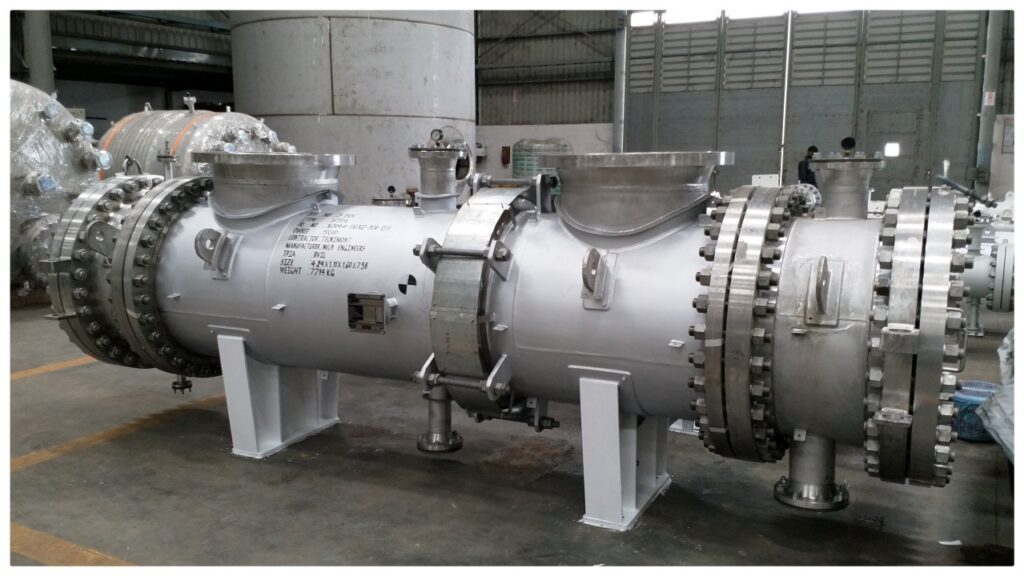Heat exchangers are essential components in various industrial processes, playing a crucial role in transferring thermal energy from one medium to another. Among the different types of heat exchangers available, the Tema heat exchanger stands out for its versatility, efficiency, and adherence to industry standards. This comprehensive guide will provide you with a deep understanding of Tema heat exchanger, their design, construction, applications, and maintenance considerations.

What is a Tema Heat Exchanger?
A Tema heat exchanger, also known as a Tubular Exchanger Manufacturers Association (TEMA) heat exchanger, is a type of shell and tube heat exchanger designed and constructed according to the standards set by the Tubular Exchanger Manufacturers Association. This association, founded in 1939, established guidelines and specifications to ensure the safe and efficient operation of shell and tube heat exchangers.
What is the primary purpose of a Tema heat exchanger?
The primary purpose of a Tema heat exchanger is to facilitate the transfer of thermal energy between two fluids while keeping them physically separated. This allows for efficient heat transfer without mixing the fluids.
Tema Heat Exchanger Design
Tema heat exchangers follow a specific design that adheres to the TEMA standards. The main components of a Tema heat exchanger include:
- Shell: The outer cylindrical vessel that houses the tube bundle.
- Tube Bundle: A collection of parallel tubes through which one fluid flows.
- Tube Sheet: A metal plate that separates the shell and tube sides, supporting the tube bundle.
- Baffles: Metal plates installed inside the shell to direct the flow of the shell-side fluid across the tube bundle.
- Channel or Bonnet: The inlet and outlet connections for the shell and tube sides.
What is the purpose of baffles in a Tema heat exchanger?
Baffles are metal plates installed inside the shell to direct the flow of the shell-side fluid across the tube bundle. They help increase the heat transfer efficiency by creating turbulence and disrupting the fluid flow, leading to better mixing and heat transfer.

Construction Materials
Tema heat exchangers can be constructed from various materials, depending on the specific application and operating conditions. Common materials used include carbon steel, stainless steel, copper-nickel alloys, and titanium. The choice of material is influenced by factors such as temperature, pressure, corrosion resistance, and compatibility with the fluids involved.
Applications of Tema Heat Exchangers
Tema heat exchangers find applications in numerous industries due to their versatility and ability to handle a wide range of operating conditions. Some common applications include:
- Power Generation: Used in power plants for steam generation, condensing, and cooling processes.
- Chemical and Petrochemical Industries: Employed in various processes such as distillation, heating, and cooling of reactants and products.
- Oil and Gas Industry: Utilized in refining processes, heat recovery systems, and gas processing.
- Food and Beverage Industry: Used for pasteurization, sterilization, and cooling processes.
- HVAC and Refrigeration Systems: Employed for heat transfer in air conditioning and refrigeration applications.
What is the significance of following TEMA standards in the construction of heat exchangers?
Following TEMA standards ensures that the heat exchangers are designed and constructed to meet specific safety and performance requirements. These standards provide guidelines for material selection, manufacturing processes, and testing procedures, ensuring reliable and efficient operation while minimizing potential risks.

Maintenance and Cleaning
Regular maintenance and cleaning are essential for ensuring the optimal performance and longevity of Tema heat exchangers. Over time, fouling (the accumulation of deposits) can occur on the heat transfer surfaces, reducing the efficiency of the heat exchanger. Proper cleaning methods, such as chemical cleaning, mechanical cleaning, or a combination of both, should be employed to remove these deposits.
Why is it important to clean Tema heat exchangers regularly?
Regular cleaning of Tema heat exchangers is important to remove fouling deposits that accumulate on the heat transfer surfaces over time. These deposits can reduce the efficiency of the heat exchanger by hindering heat transfer and increasing pressure drop. Proper cleaning helps restore the heat exchanger’s performance and extend its service life.

Conclusion
Tema heat exchangers are essential components in various industries, providing efficient and reliable heat transfer solutions. By adhering to the TEMA standards, these heat exchangers ensure consistent performance, safety, and compliance with industry regulations. Understanding the design, construction, applications, and maintenance requirements of Tema heat exchangers is crucial for optimizing their performance and maximizing their operational lifespan. Whether you’re an engineer, plant operator, or a professional in a related field, this ultimate guide has provided you with the knowledge you need to effectively work with and maintain these vital components.



